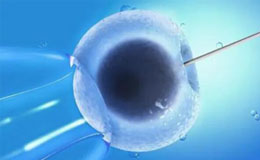NEWS
What causes infertility in women?
2021.11.18 1087
Women need functioning ovariesexternal icon, fallopianexternal icon, and a uterusexternal icon to get pregnant. Conditions affecting any one of these organs can contribute to female infertility. Some of these conditions are listed below and can be evaluated using several different tests.
Disruption of ovarian function (presence or absence of ovulation and effects of ovarian “age”)
A woman’s menstrual cycleexternal icon is, on average, 28 days long. Day 1 is defined as the first day of “full flow.” Regular predictable periods that occur every 21 to 35 days likely reflect ovulation. A woman with irregular periods is likely not ovulating.
Ovulation can be predicted by using an ovulation predictor kit and can be confirmed by a blood test to check the woman’s progesterone level on day 21 of her menstrual cycle. Although several tests exist to evaluate a woman’s ovarian function, no single test is a perfect predictor of fertility. The most commonly used markers of ovarian function include follicle-stimulating hormone (FSH) value on day 3 to 5 of the menstrual cycle, anti-müllerian hormone value (AMH), and antral follicle count (AFC) using a transvaginal ultrasound.
Disruption in ovarian function may be caused by several conditions and warrants an evaluation by a doctor.
When a woman doesn’t ovulate during a menstrual cycle, it’s called anovulation. Potential causes of anovulation include the following
Polycystic ovary syndrome (PCOS).external icon PCOS is a condition that causes women to not ovulate, or to ovulate irregularly. Some women with PCOS have elevated levels of testosterone, which can cause acne and excess hair growth. PCOS is the most common cause of female infertility.
Diminished ovarian reserve (DOR). Women are born with all of the eggs that they will ever have, and the number of eggs declines naturally over time. DOR is a condition in which there are fewer eggs remaining in the ovaries than expected for a given age. It may occur due to congenital (condition present at birth), medical, surgical, or unexplained causes. Women with DOR may be able to conceive naturally, but will produce fewer eggs in response to fertility treatments.
Functional hypothalamic amenorrhea (FHA). FHA is a condition caused by excessive exercise, weight loss, stress, or often a combination of these factors. It is sometimes associated with eating disorders such as anorexia.
Improper function of the hypothalamus and pituitary glands. The hypothalamus and pituitary glands in the brain produce hormones that maintain normal ovarian function. Production of too much of the hormone prolactin by the pituitary gland (often as the result of a benign pituitary gland tumor), or improper function of the hypothalamus or pituitary gland, may cause a woman not to ovulate.
Premature ovarian insufficiencyexternal icon (POI). POI, sometimes referred to as premature menopause, occurs when a woman’s ovaries fail before she is 40 years of age. Although certain exposures, such as chemotherapy or pelvic radiation therapy, and certain medical conditions may cause POI, the cause is often unexplained. About 5% to 10% of women with POI conceive naturally and have a normal pregnancy.
Menopauseexternal icon. Menopause is a natural decline in ovarian function that usually occurs around age 50. By definition, a woman in menopause has not had a period for at least one year. Many women experience hot flashes, mood changes, difficulty sleeping, and other symptoms as well.
Fallopian tube obstruction (whether fallopian tubes are open, blocked, or swollen)
Risk factors for blocked fallopian tubesexternal icon (tubal occlusion) can include a history of pelvic infection, ruptured appendix, gonorrhea, chlamydia, endometriosisexternal icon, or prior abdominal surgery.
Fallopian tubes may be evaluated by hysterosalpingogram or by chromopertubation.
Hysterosalpingogram is an X-ray of the uterus and fallopian tubes. A radiologist injects dye into the uterus through the cervix and simultaneously takes X-ray pictures to see if the dye moves freely through fallopian tubes indicating they are open.
Chromopertubation is similar to a hysterosalpingogram but is done in the operating room at the time of a laparoscopy. Blue-colored dye is passed through the cervix into the uterus and through the fallopian tubes. This test is used to evaluate if the fallopian tubes are open and to assess if they are dilated.
Physical characteristics of the uterus
Depending on a woman’s symptoms, the uterusexternal icon may be evaluated by transvaginal ultrasound to look for fibroidsexternal icon or other problems, including intrauterine adhesions, endometrial polyps, adenomyosis, and congenital anomalies of the uterus. A sonohystogram or hysteroscopy may also be performed to further evaluate the uterine environment.





